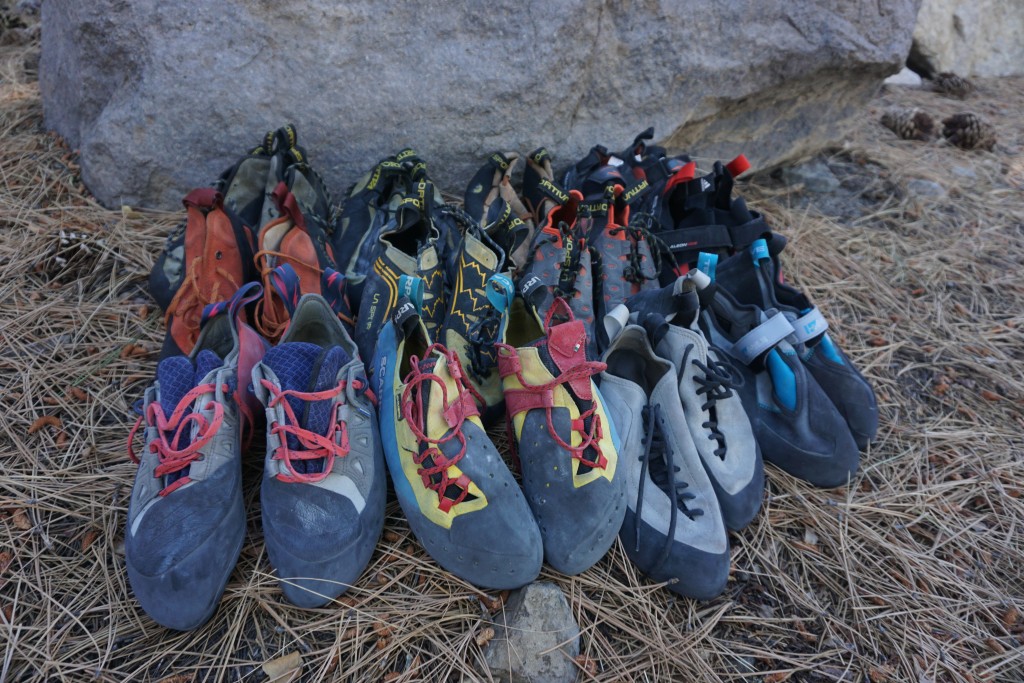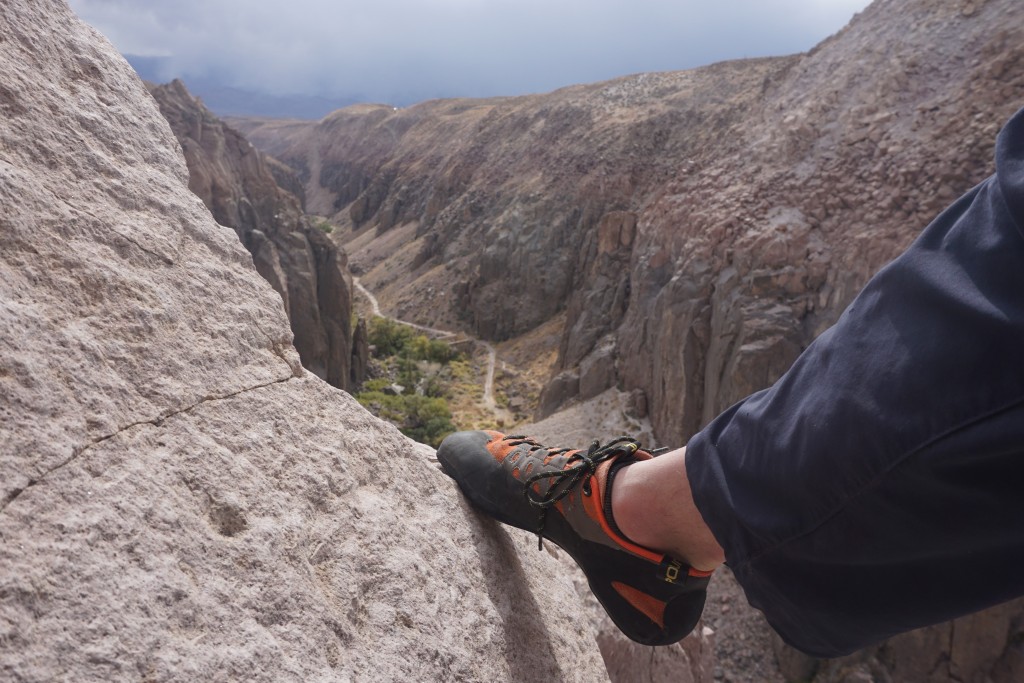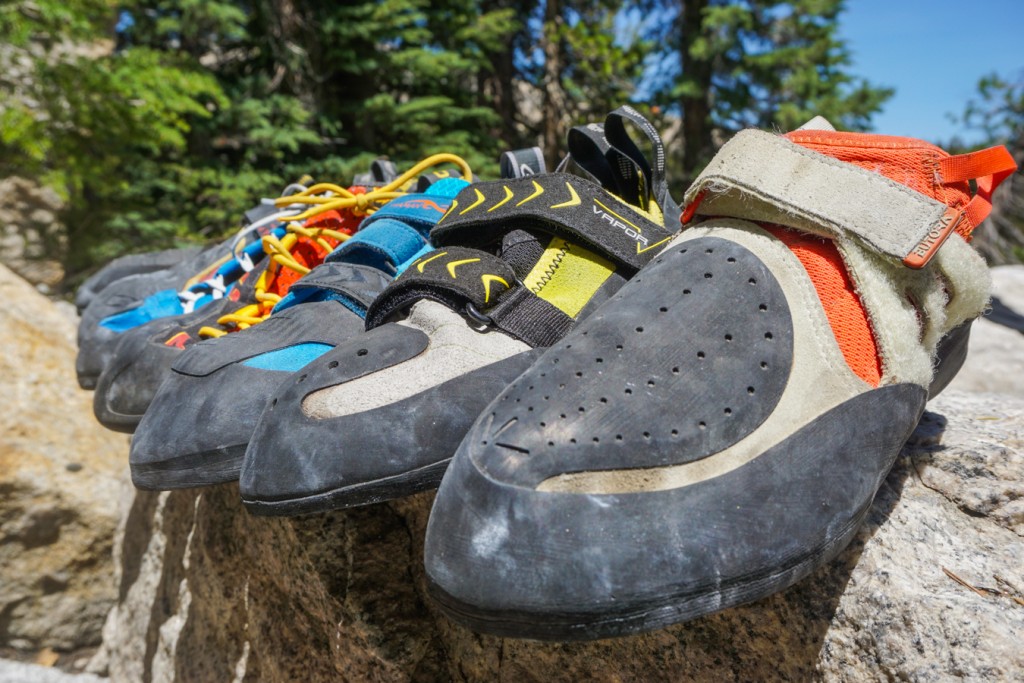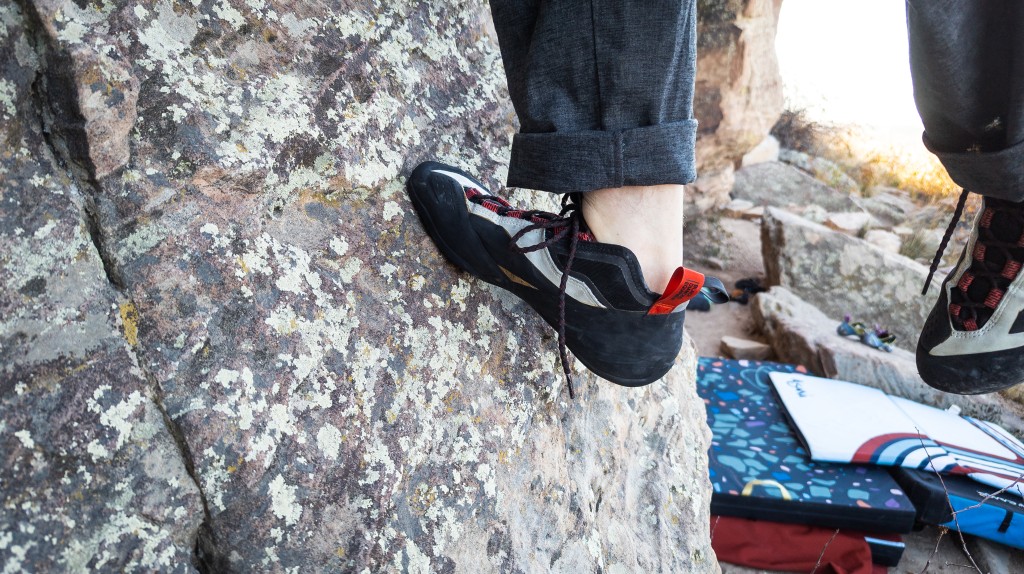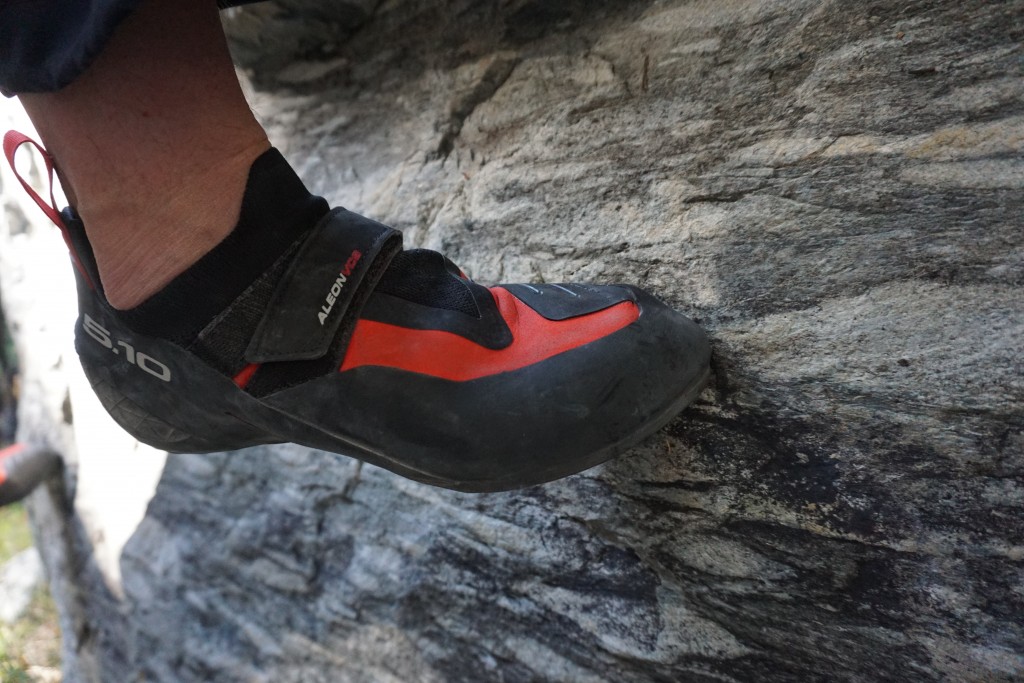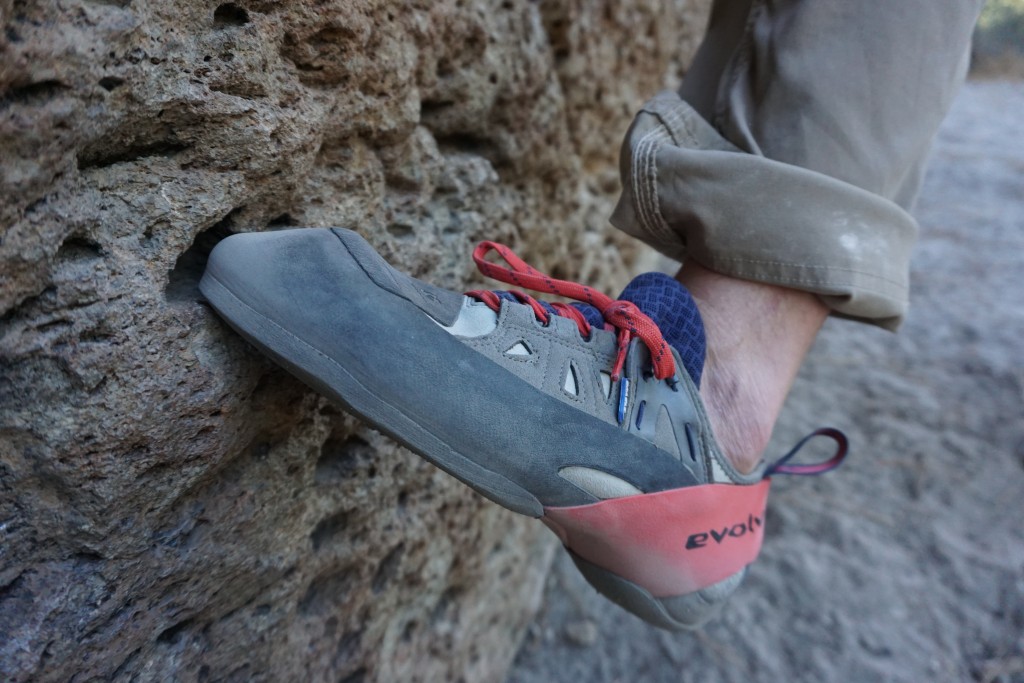The rock climbing shoe review began like any other review at OutdoorGearLab, with extensive online research. We examined sales at online retailers, perused customer comments, and read formal reviews from our competitors to select the top 28 models that are currently available. Unlike many other review sites, we then purchased the top shoes we selected to undergo full hands-on testing. As far as we're concerned, the best way to test a climbing shoe is to go climbing, so that's exactly what we did. We made sure to do so on a variety of rock types—limestone, sandstone, volcanic tuff, granite—and with testers of a variety of foot types—narrow feet, wide feet, high arches, flat arches, and every kind of feet in between. Below are brief descriptions of how we tried to evaluate our specific performance metrics.
Comfort
Of all our performance metrics, comfort is the most subjective. Everybody's feet are different, and a comfy pair for one tester was occasionally excruciating for another to wear. To try to make it more objective, we recruited several testers with the same shoe size but different foot types. They were all asked to independently evaluate each model and report on their comfort. Some shoes generated polarizing contradictory reports. When this occurs, we explain the differing opinions in the individual shoe reviews.
Other shoes, however, generated near-universal acclaim for their superior comfort. Generally, these are less aggressive, high-volume designs that also feature lots of padding. Often, a shoe's popularity is largely due to widely universal comfort for many climbers. This provides a baseline for standard foot shape. If a shoe deviates in a major way from a “standard” last, we describe its specificity and highlight what foot shape the shoe fits best.
Smearing
Smearing is the act of pushing rubber, usually under the big toe, across vague features on the rock to create purchase. Smearing is a technique used on any angle of climb – even the steepest climbs may involve smearing of some sort to get through a tricky section. In order to test this metric, we took these shoes out to the slabbiest boulders around Colorado, the low-angle romps of Lumpy Ridge, and the technical domes of the Estes Park Valley. We mostly focused on a shoe's ability to smear for long periods of time on slabs (compared to, say, a steep smear you might use bouldering in Fontainebleau.) In general, shoes with a gentle downturn or a flat profile, which are stiff but not terribly clunky, provide us with the dexterity needed to use subtle features without being too painful to stand on for a long time.
Between edging and smearing, it is hard to say which technique is most utilized by climbers on a day-to-day basis – it likely depends on where you climb most. But it's hard to deny the importance of either in climbing footwork. Even on vertical climbs with edges, we are often mixing techniques and “smedging” by smearing across the top of an edge.
Edging
Edging comes into play the most while face climbing on walls that range from less than vertical to slightly overhanging. To test performance, we sought out routes within this range whose primary features were edges rather than pockets, cracks, smears, or jugs. Bolted routes in granite zones like Pine Creek Canyon and Yosemite, along with volcanic crimpfests in the Owens River Gorge, fit these criteria nicely. We then lapped pitch after pitch while recording how well each shoe supported our feet and gripped progressively tinier edges. Some shoes performed excellently; others, not so much. Common problems were shoes that let our feet slide around inside or pliable rubber that bent or oozed off edges. A shoe with a slight downturn, stiff flex, and precise toe shape provided the best performance for this technical type of footwork.
Pulling
As the angle of a climb gets increasingly steep, our ability to simply stand on our feet and weight footholds goes away. At this point, we begin to utilize different techniques to take the weight off our swollen forearms through pulling. This is accomplished by curling our toes into footholds like they are fingers, using the top of our toes in a toe hook, or hooking our heels around features. We evaluated this metric by assessing each shoe's performance on steep overhanging terrain – from pocketed limestone, to sandstone of the Red River Gorge, to steep granite boulders in Rocky Mountain National Park. We particularly focused on each model's ability to heel hook, toe hook, utilize pockets, or pull your lower body into the wall in other ways. In general, softer, more downturned shoes allowed our testers to better pull into footholds on steep terrain.
Crack Climbing
To test crack climbing performance, we looked for featureless walls with sustained cracks of differing sizes. These cracks ranged from the perfect sandstone splitters of Indian Creek to the painful granite flares of Yosemite, with an enormous variety in between. Interestingly, the same shoe is often not great for both wide and thin cracks. Wide cracks are usually nicer to climb in shoes with some padding, while thin cracks reward designs with the slimmest toe boxes. With this in mind, we tried to give our highest ratings to shoes that performed the best in the widest range of sizes. For the thinnest cracks, the shoe that works best is often a personal preference, foot size-dependent, and isn't necessarily a shoe specifically designed for crack climbing, which can make it somewhat painful in cracks of other sizes. With this in mind, if a shoe excels in a certain crack size, we mention it specifically so that you can better pick out the perfect shoe for a technical crack project.

